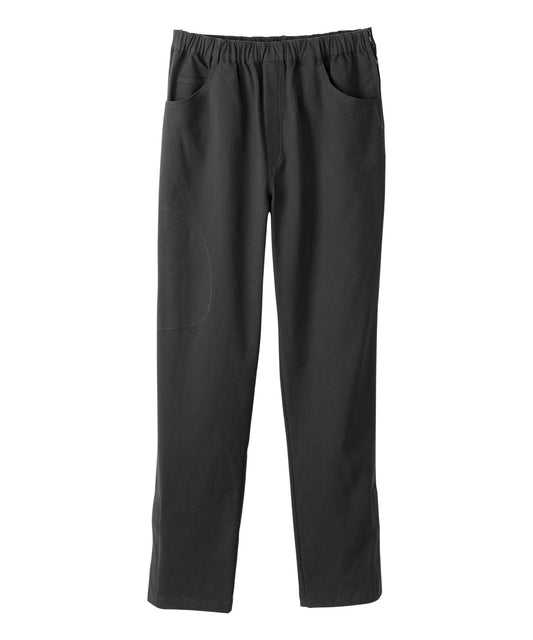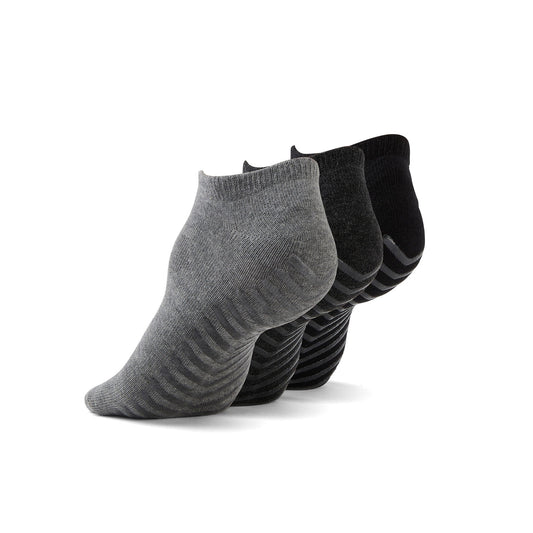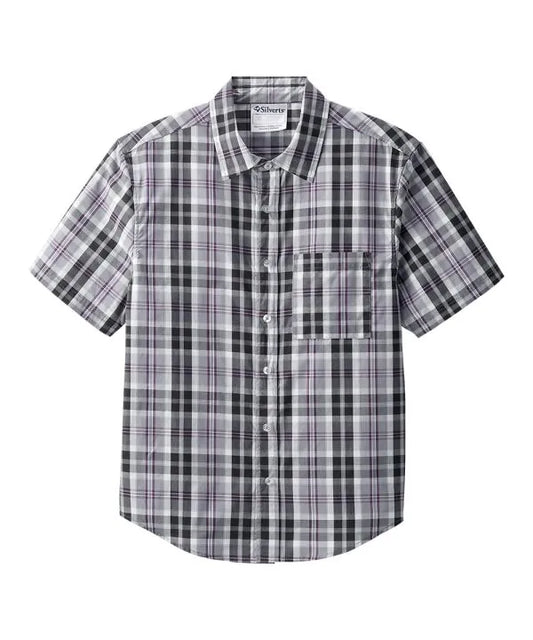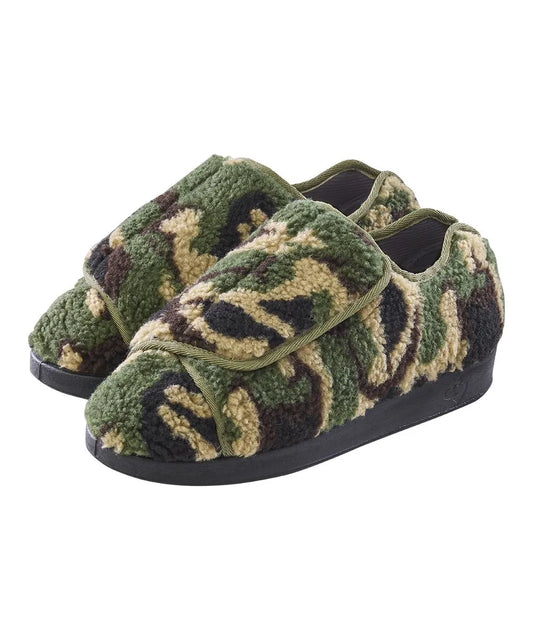For individuals with disabilities or special mobility needs, traditional clothing typically sold in stores can be restrictive and challenging to put on and take off. This is where adaptive clothing comes into play by offering a more inclusive and functional solution for individuals with different physical abilities. In this blog post, we will explore adaptive clothing and how it differs from traditional clothing.
Accessibility
Accessibility is the premise of adaptive clothing designs. This feature is especially useful for individuals with disabilities or limited mobility. Adaptive clothing incorporates a range of elements to make dressing easier and more manageable for everyone.
For instance, traditional clothing often relies on small buttons and zippers, which can be challenging to manipulate for individuals with limited dexterity, arthritis, or other mobility impairments. In contrast, adaptive clothing tends to be designed with Velcro and magnetic closures, such as these Women’s Extra Wide Comfort Shoes found at June Adaptive, which are easier to use and ensure a secure and hassle-free fastening.
Velcro and magnetic closures are often placed on garments such as shirts, pants, and outerwear, allowing individuals to dress independently. For example, June Adaptive offers a Men’s Long Sleeve Shirt with Magnetic Buttons.
Moreover, traditional clothing tends to have side or top openings, requiring the individual to raise their arms or legs during the dressing process. This often requires some flexibility to fit through the openings, which can be a significant obstacle for individuals with mobility limitations or those recovering from surgery. However, adaptive clothing addresses this issue by incorporating front or back openings. This design allows individuals to put on and take off their clothing with minimal effort, reducing the need for strenuous movements or assistance from caregivers.
In addition, traditional pants often come with button or zipper closures, which can be difficult for people with physical disabilities. Adaptive clothing often replaces these traditional closures with elastic waistbands, which provide a comfortable and secure fit, making dressing and undressing a straightforward task. The absence of buttons and zippers removes any potential discomfort or irritation caused by these components.
Adjustable Sizing
Traditional clothing tends to be made for certain sizes and adheres to certain measurements based on a size chart. This means that individuals need to buy new clothes whenever their current clothes no longer fit their size needs, which can lead to increased financial burden over time. However, adaptive clothing acknowledges that individuals' bodies may change over time due to medical conditions, treatments, or fluctuations in weight. To accommodate these variations, adaptive clothing offers adjustable features.
For instance, many adaptive garments incorporate drawstrings or elastic bands at key points like waistbands, cuffs, and hems, which can be seen in the Men’s Cotton Pants with Elastic Waist found at June Adaptive. These features provide individuals the ability to customize their fit according to their specific needs. For example, someone who experiences weight fluctuations due to medication can easily adjust the waistband for a secure and comfortable fit without needing to replace their clothing. Then if their weight returns to their typical mass post-medication, they can still fit comfortably in their clothes. Additionally, some adaptive clothing items feature snap fasteners along the sides or shoulders. These snaps can be adjusted to create a looser or tighter fit, catering to the wearer's preferences and comfort levels.
Comfort and Sensory Considerations
Traditional clothing may include tags, seams, and tight waistbands that can cause discomfort or irritation, especially for individuals with sensory sensitivities or skin conditions. It may even rub on the skin, causing rashes, redness, and more. Adaptive clothing, on the other hand, places a strong emphasis on comfort with seamless and tagless designs, soft fabrics, and adjustable elements, ensuring a comfortable and irritation-free wearing experience.
Adaptive clothing minimizes or eliminates seams in areas that are in direct contact with the body, such as the shoulders, underarms, and waist. This seamless design reduces friction and prevents chafing, ensuring a comfortable wearing experience, particularly for those with sensitive skin or sensory sensitivities.
Additionally, clothing tags can be bothersome, especially for individuals with sensory issues. Adaptive clothing often opts for tagless designs, using printed labels or heat-transferred information instead. This small change can make a significant difference in comfort, eliminating the discomfort and itchiness associated with traditional clothing tags.
The choice of fabrics also plays a crucial role in ensuring comfort throughout the day. Adaptive clothing often utilizes breathable and moisture-wicking fabrics to prevent overheating and discomfort. These materials help regulate body temperature, which is particularly important for individuals who may have limited ability to adjust their clothing. For those with sensitive skin or allergies, adaptive clothing brands may offer hypoallergenic fabric options that minimize the risk of skin irritation or allergic reactions.
Ease of Care
Traditional clothing often comes with specific care instructions that can be time-consuming or challenging for individuals with disabilities or their caregivers to follow. For instance, many formal or high-end traditional garments require dry cleaning, which can be expensive and inconvenient. For individuals with mobility limitations or transportation constraints, taking clothing to a dry cleaner can be a significant challenge. Moreover, some traditional clothing items are made from delicate fabrics that require gentle washing, careful handling, and ironing. This can be difficult for individuals with disabilities who may have limited fine motor skills or hand strength. It may also be physically demanding and may pose safety risks for individuals with disabilities.
In contrast, adaptive clothing is designed with practicality in mind, particularly regarding care and maintenance. Many adaptive clothing items are machine-washable, simplifying the cleaning process. This feature is a significant convenience for individuals and caregivers as it eliminates the need for special care or expensive dry cleaning. Also, adaptive clothing is often made from durable and resilient materials that can withstand frequent washing and wear. This durability ensures that the clothing maintains its quality and functionality over time, reducing the need for frequent replacements. Adaptive clothing brands also select fabrics that are less prone to wrinkling, reducing the need for ironing or steaming. This feature is especially valuable for individuals who may have difficulty with these tasks.
Styling
Traditional clothing often follows and mimics mainstream fashion trends, and it places a primary focus on style and aesthetics. While traditional clothing offers a wide range of fashion choices, it may not always prioritize functionality or comfort, especially for those with disabilities. Fashion trends may not always align with the needs and preferences of individuals with disabilities as it tends to prioritize aesthetics over practicality. This emphasis on appearance can sometimes result in clothing that is less comfortable or less accessible for individuals with mobility challenges.
However, adaptive clothing recognizes that individuals with disabilities deserve clothing that not only looks good but also meets their practical needs. Many adaptive clothing brands understand the importance of fashion and offer a wide range of stylish options. These designs include adaptive versions of everyday wear, formal attire, activewear, and more. This ensures that individuals with disabilities can still express their style just like anyone else.
Moreover, clothing incorporates innovative features and elements discreetly into its designs, which can include adaptive closures like Velcro and magnetic snaps, discreet openings for medical devices, and adjustable elements that enhance both style and function. Inclusivity in fashion is becoming increasingly important, and many adaptive clothing brands actively promote diversity by featuring models with disabilities in their campaigns. This representation not only breaks down stereotypes but also sends a powerful message that fashion is for everyone.
Medical Device Access
Traditional clothing is typically not designed to accommodate medical devices such as feeding tubes, catheters, or ports. As a result, individuals who rely on these devices may encounter various challenges when wearing traditional clothing. For instance, traditional clothing can obstruct access to medical devices, making it difficult for individuals to manage and maintain their health. Tight waistbands or tucked-in shirts may press against feeding tubes or catheter sites, leading to discomfort and potential complications. Individuals may need to make awkward adjustments to traditional clothing to gain access to their medical devices, which can be inconvenient and potentially embarrassing, especially in public settings. Additionally, some individuals may feel compelled to choose clothing that is less fashionable but more accessible to their medical devices, limiting their clothing options and impacting their self-esteem.
Adaptive clothing recognizes the critical need for easy access to medical devices and addresses this issue through thoughtful design and innovative solutions. Many adaptive clothing items feature strategically placed openings, such as discreetly positioned zippers, snaps, or hook-and-loop closures. These openings allow individuals to access their medical devices without removing their clothing entirely. Moreover, adaptive clothing ensures that individuals can access their medical devices with privacy and dignity. These openings are designed to be discreet and are often concealed within the clothing's overall design, so they do not draw unnecessary attention.
Conclusion
Overall, compared to traditional clothing, adaptive clothing promotes inclusivity, accessibility, and innovation. The key differences between adaptive and traditional clothing lie in their design philosophy, with adaptive clothing prioritizing function and accessibility, without compromising on style or comfort. As awareness grows and the fashion industry becomes more inclusive, we can expect to see even more exciting developments in the world of adaptive clothing, ensuring that everyone has the opportunity to express their style and feel comfortable in what they wear.


















